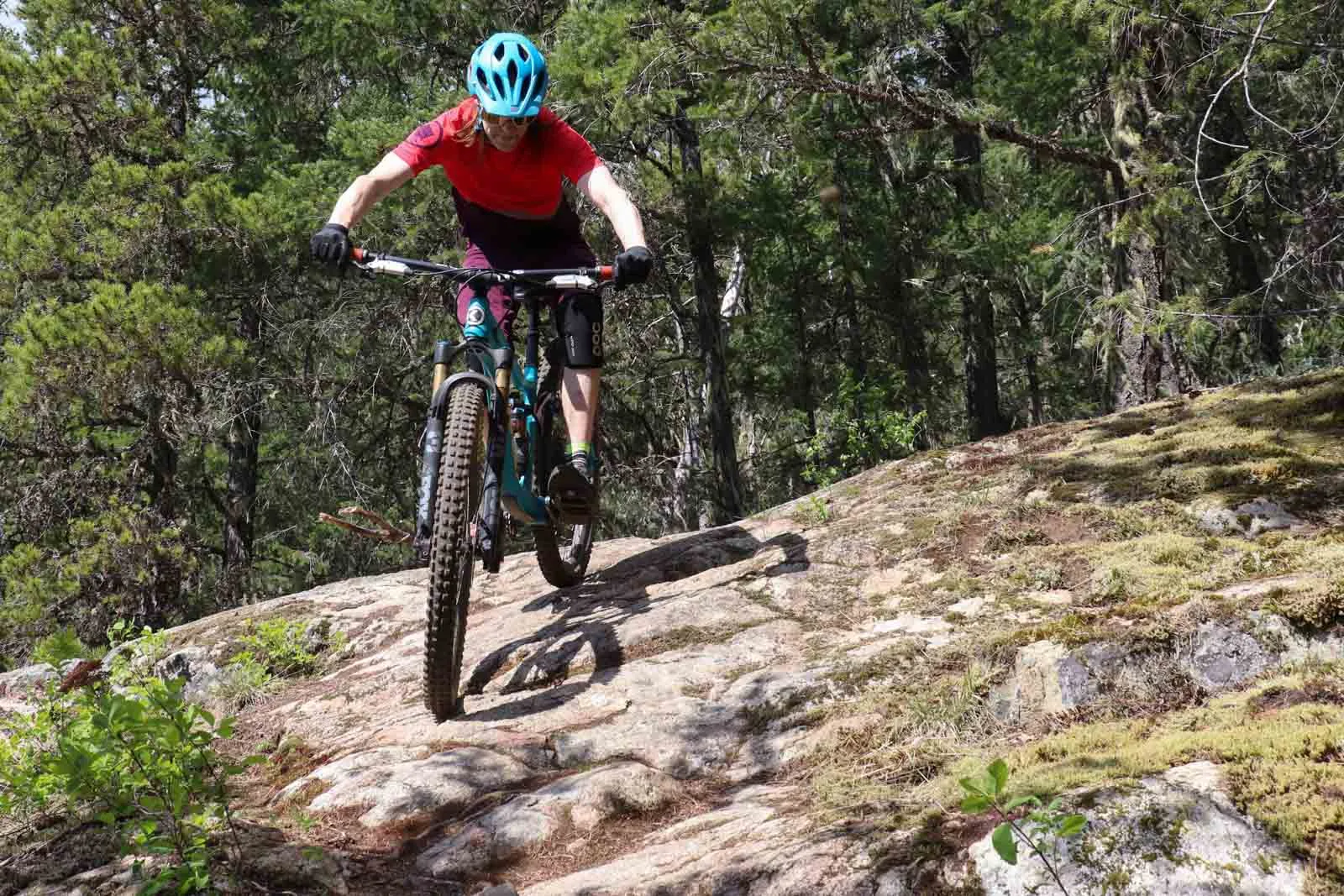Likely the biggest OEM tire supplier in the sport of MTB, Maxxis is a brand almost every trail or downhill rider has probably had some experience with. Their popular Minion, Assegai, and High Roller tires have been favorites of many for years, and I was not surprised to find the revised High Roller 3s offer exactly what Maxxis claims.
The new High Roller 3 is a downhill tire intended for all kinds of conditions. I received a set upon their launch at Crankworx Whistler last summer, and did plenty of riding with them throughout last fall and this spring. That allowed me to test the High Rollers in all conditions, from dusty and dry to wet and muddy.
I found the High Roller 3s did perform well as an all-conditions tire, keeping their composure on anything from wet off-camber roots to loose dusty chutes. They’re also impressively fast rolling for such a luggy tread, their sidewalls are supportive, and they’re not overly heavy for DH tires.
Maxxis High Roller 3 – Tread Design and Specs
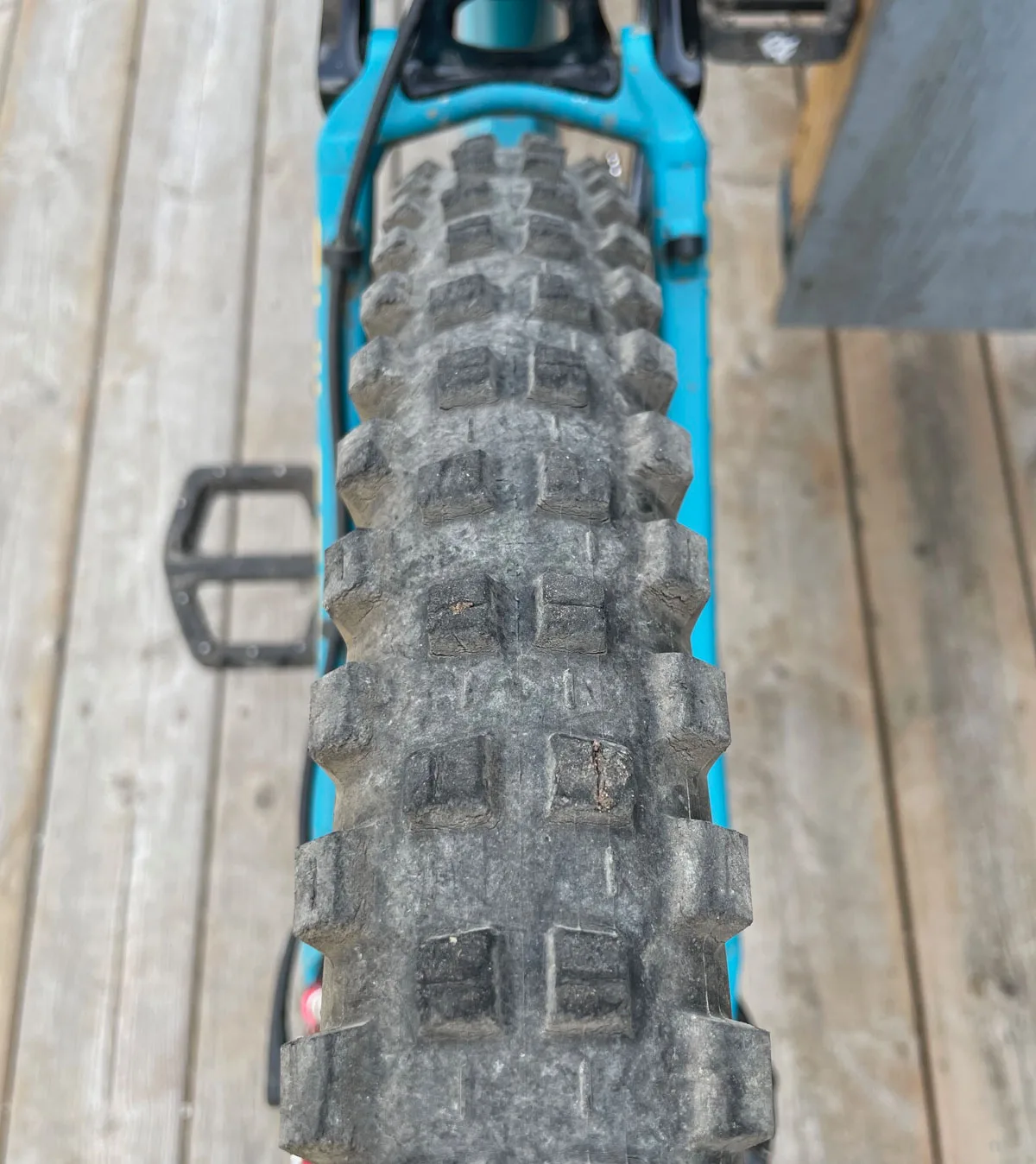
Aiming for optimal performance on any race track at any time, the High Roller 3’s tread pattern combines center lugs designed for wet conditions and side knobs optimized for dry, dusty terrain. The middle area’s open design and square knobs should ensure good soil penetration in wet conditions. This part of the tread was revised quite a bit from the previous High Roller II. The side knobs didn’t change much from the previous design: Those sturdy knobs provide solid traction in dry, dusty conditions.
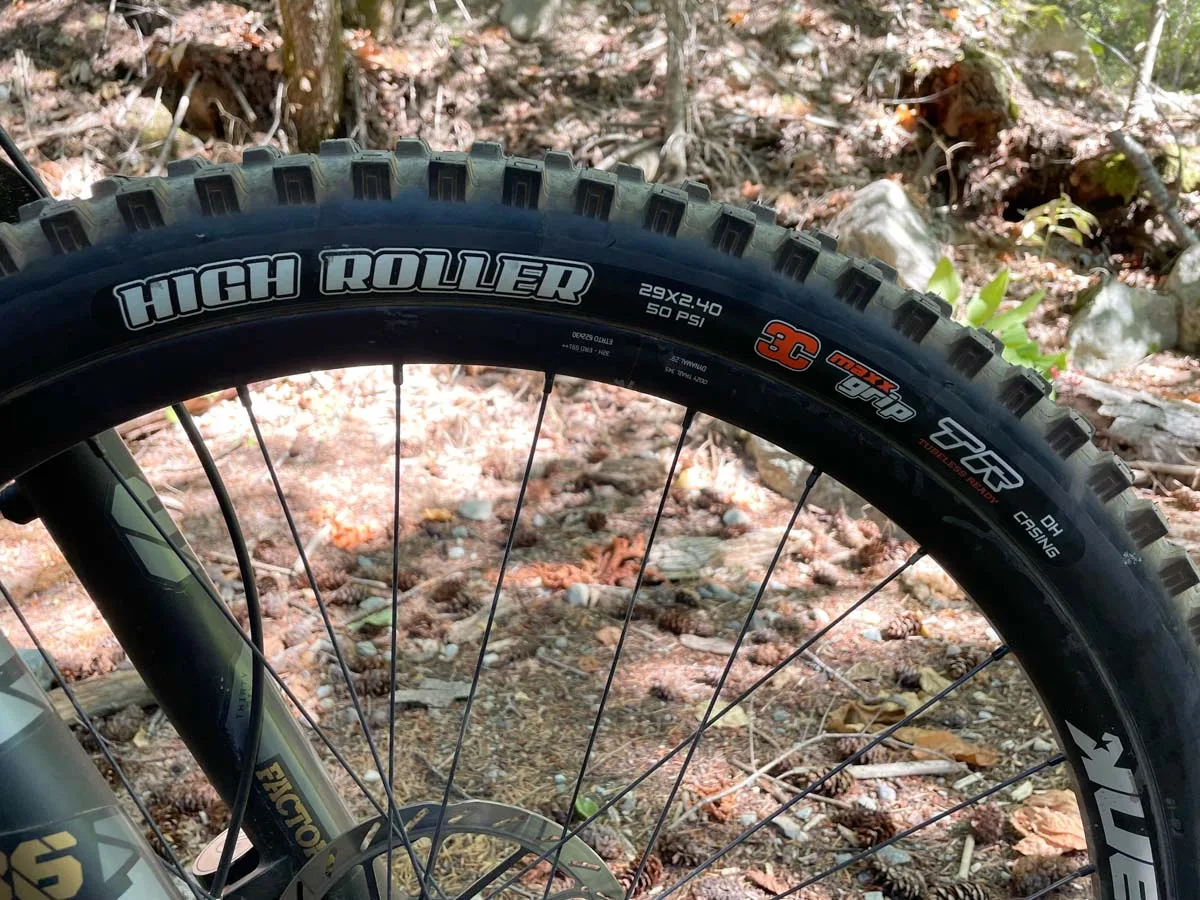
The High Roller 3s feature Maxxis’ MaxxGrip compound and an updated 2×60 TPI DH casing that features a new butyl insert. All models are tubeless-ready. The new High Roller 3 is available with Maxxis’ DH, Double Down, or EXO+ casings. 29” and 27.5” sizes are available in a 2.4” width only.
Weight is listed at 1400g for the DH casing 29” model I tested. My scale showed a used tire (with sealant leftovers) at 1430g.
Ride Impressions – Dry Conditions
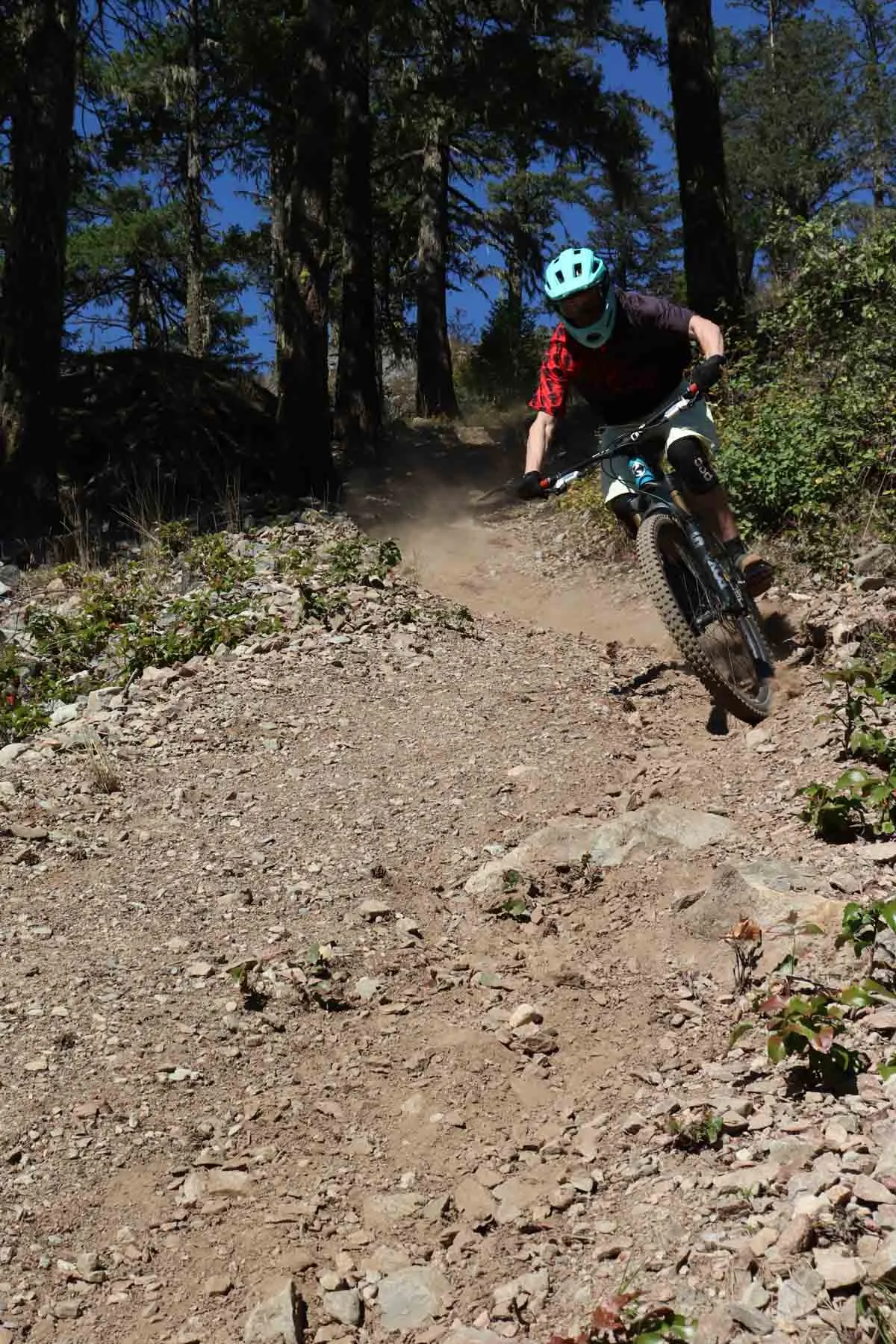
I started riding the High Roller 3s with my local trails in loose and dusty late summer conditions. I chose a steep, loose trail with several sizeable rock slabs for a focused test ride, and found the High Rollers handled it all very well.
The tires provided very good grip in loose sections and impressive braking bite in deep dust or small loose rocks. The trail I rode features one particularly steep, long, and dusty chute, and the High Roller 3’s impressed me there. Maintaining enough traction to keep my speed under control (always the goal with this chute) was a little easier with the High Rollers than the Assegai/Minion DHR combo I was running before.
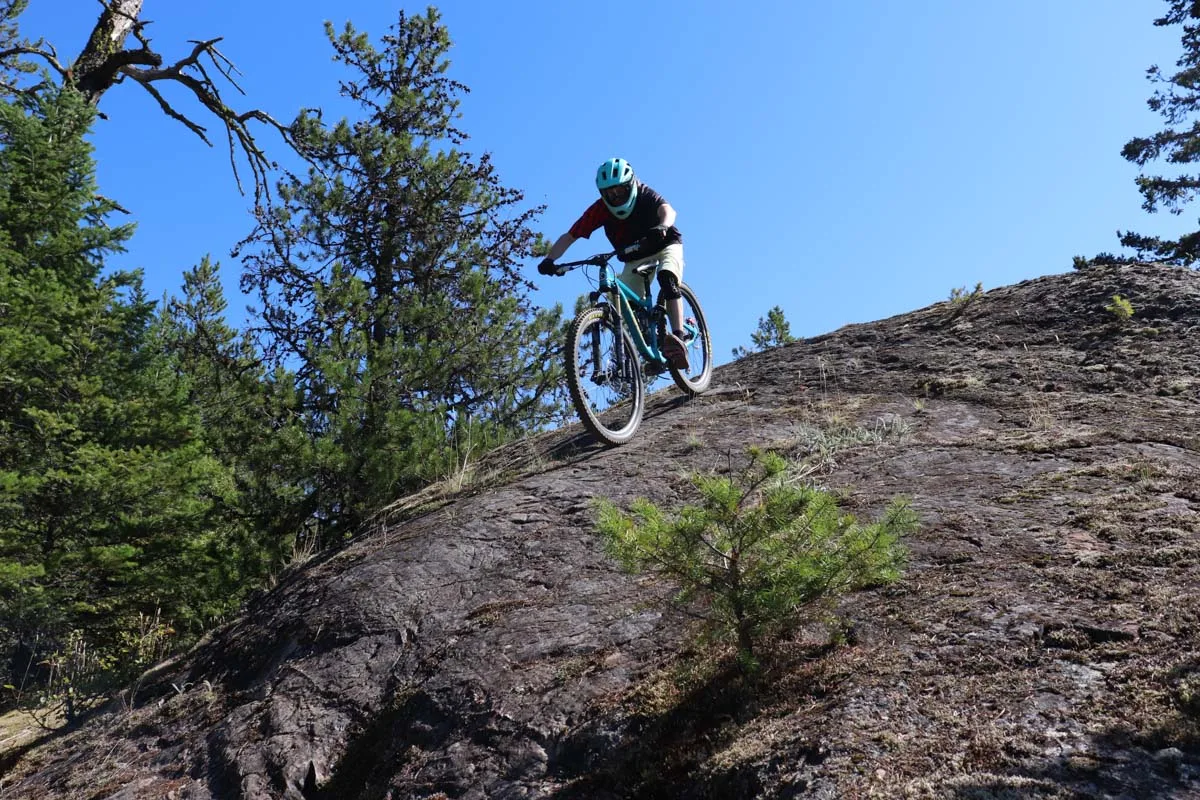
Traction on dry rock slabs was also excellent with the High Roller 3s. While the tall lug tread design doesn’t offer a huge amount of surface contact, their tacky MaxxGrip compound made it easy to keep my speed to a minimum while creeping down smooth or rough slabs.
Wet Conditions
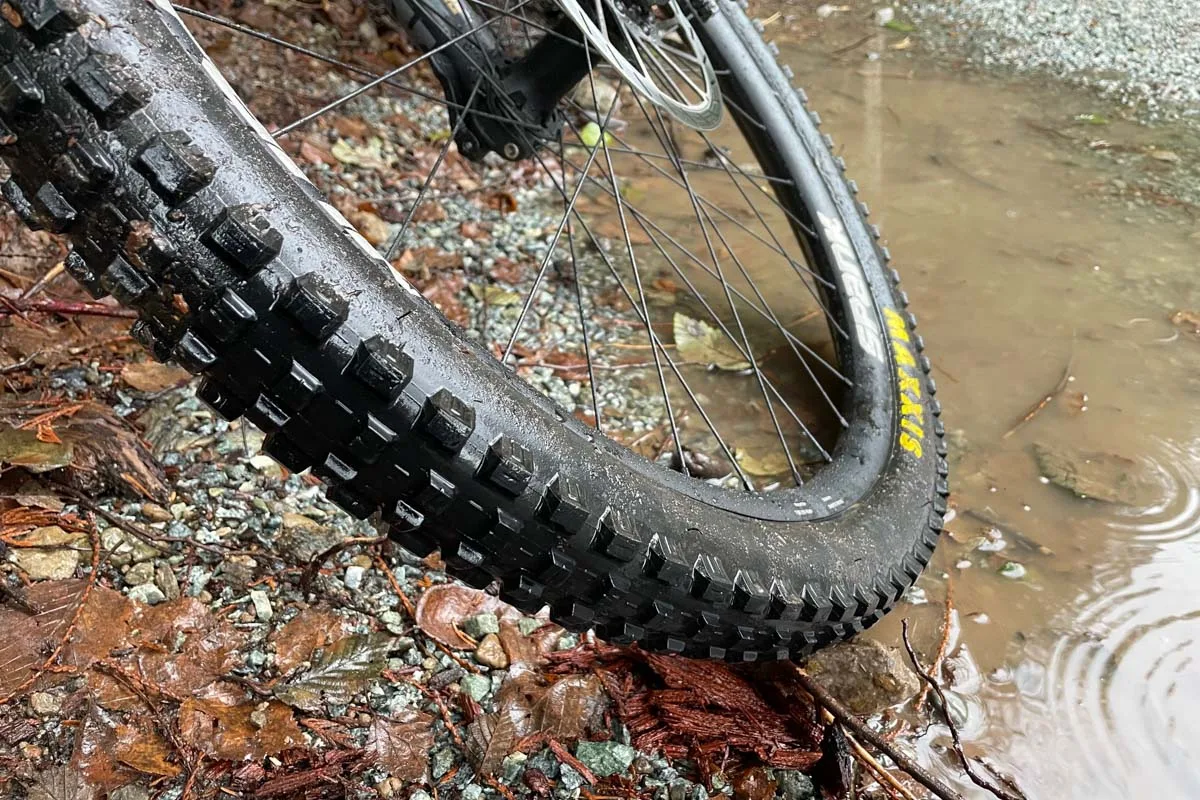
In the fall and spring, I got several chances to ride the High Rollers in wet and muddy conditions. Not surprisingly, they offered great grip in ideal tacky dirt, and their tall side lugs firmly locked into damp berms for confident cornering.
One day, I went for a rainy lap of a fast trail riddled with off-camber roots and rocks. The High Rollers’ tread did great at finding traction despite the slippery conditions. I felt very confident holding straight lines over the slick wet roots and never slipped a wheel on any of them. The tires stuck well during the climb too, as I slowly clambered up wet roots, loose rocks, and small slabs without ever losing traction.
All in all, the High Roller 3s held traction very well on damp roots and rocks… but I’ll admit they’re not quite as sticky as the WTB SG1 Judge and Verdict tires I tested just beforehand. Those tires offered incredible grip in the wet, but compared to the High Rollers, they are heavier and roll more slowly.
Unfortunately for testing, my area doesn’t get the kind of sticky mud that packs up on tires, but in the wet and slick conditions, I rode the High Rollers kept themselves very clean.
Durability
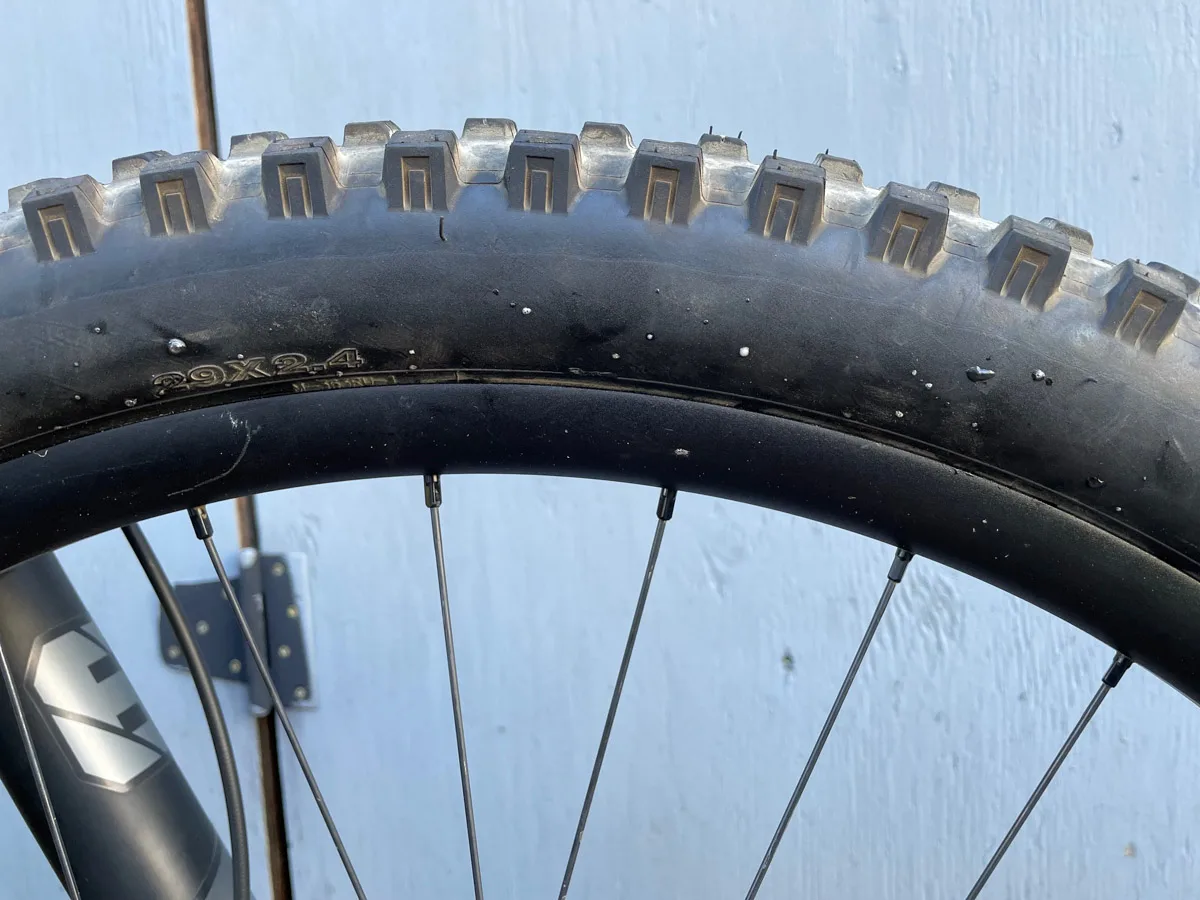
At one point, I was concerned about the High Roller 3’s longevity, but it turns out that a minor symptom of use has not proved to be an ongoing issue. Tires will ‘sweat’ small bits of sealant through the sidewalls after they get worn in, and I was concerned when I noticed this happening on the High Rollers shortly after I reinstalled them last fall.
At that point the High Roller 3s had not seen much use, so I was worried the sidewalls were wearing out quickly. However, after several rides this spring, I’m happy to say the sidewalls aren’t showing signs of excess wear or allowing much of any sealant to seep through. They also don’t feel like they’ve lost any degree of support since day one.
In terms of overall durability, I’ve had no burps, punctures, or slashes during all my test rides with the High Roller 3s.
Rolling Speed/Sidewall Support

As a lightweight rider, I don’t generally run DH tires on my trail bike, but I will say the High Roller 3s may have convinced me to run one on the rear wheel in the future. Between their reasonable weight and relatively fast roll, these are the most tolerable DH tires I’ve ridden on my trail bike yet. I enjoyed the added sidewall support they offer, while their rolling speed kept them moving uphill fairly easily.
The High Roller 3s definitely roll faster than the WTB SG1 tires I recently tested. After switching from the WTBs to the High Rollers, my bike immediately felt less sluggish on climbs. The High Roller 3s aren’t particularly lightweight tires, but they’re not super heavy for DH treads. They’re a good option for someone who intends to ride trails/enduro with them.

As for sidewall support, the High Roller 3s offer that extra cushion from sharp hits and supportive cornering you’d expect from a DH tire. I can get away with lighter casings without wrecking wheels or tires, but with the High Rollers, I could charge through rock gardens with far fewer (if any) harsh impacts. The DH casing’s added shock absorption was noticeable right away versus a trail casing.
The stiffer sidewalls also allow you to rail corners hard and fast. Again, I’ve never had issues with peeling tires off or burping them in corners, but I could still appreciate the DH-level support the High Roller 3s provide. The stiffer walls allow for very aggressive cornering with less tire roll or squirming, so you can comfortably hold a solid line through high-speed corners.
Cornering
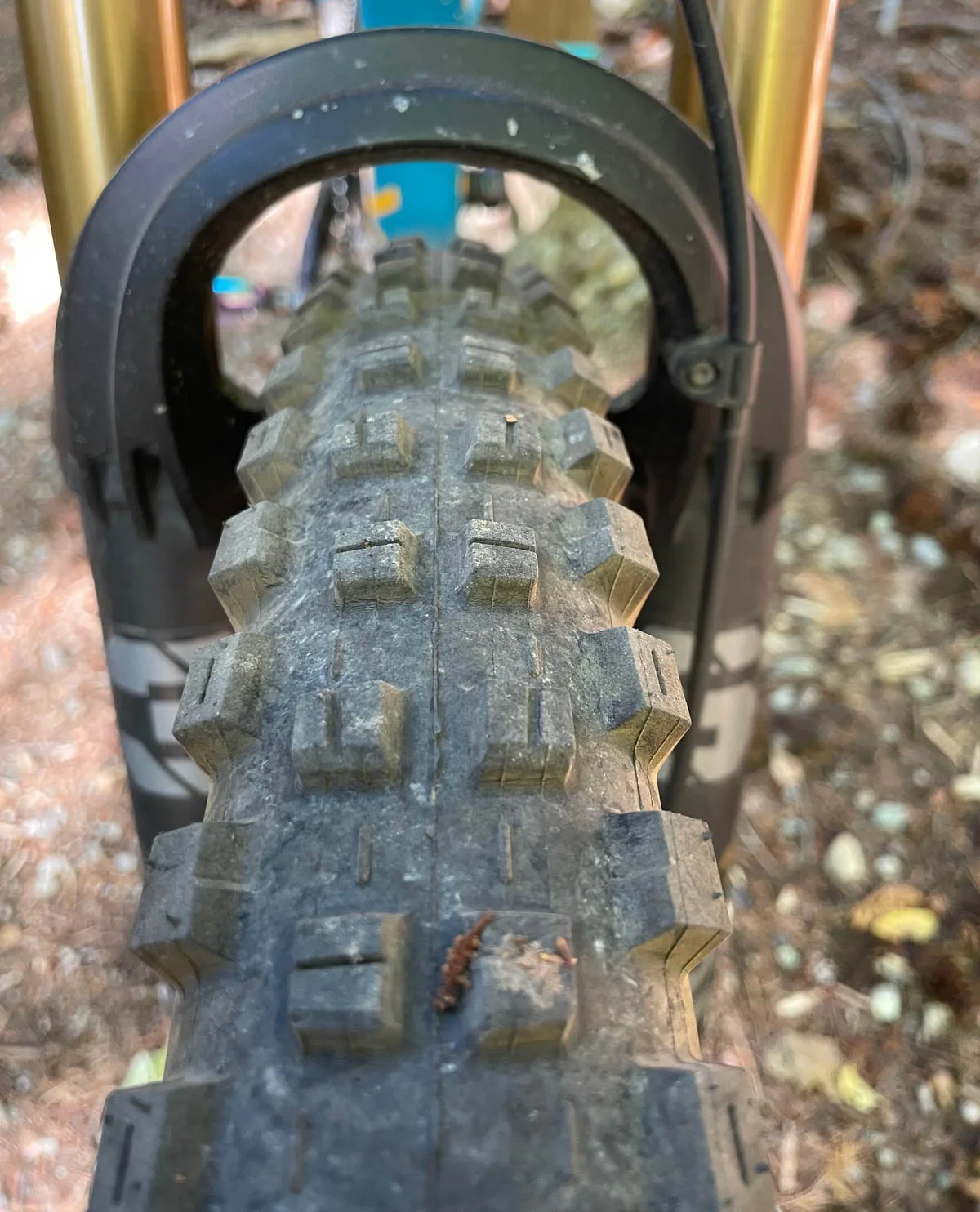
As a quick reminder, the High Roller 3 tire is not front or rear-specific. It is designed to be run as a pair (as tested) or with another front/rear tire if desired.
The profile on the High Roller 3s’ tread isn’t super round, but the tire does provide a nice smooth transition from the two rows of center knobs to the outer center/side knobs. Charging through fast, gentle S turns, the High Rollers roll side to side very smoothly.
Furthermore, at any common cornering angle, the outer center and side knobs are both engaged, offering solid traction through turns. The tall side knobs hit the dirt before you’re leaned over too far, and the outer center knobs don’t leave the ground until you’re nearly dragging your handlebars.

The big side lugs dig into soft berms or corners really well, but offer pretty good traction in loose dusty conditions too. I also noticed the tall side knobs grab nicely around flatter corners, and their sturdy construction helps you hold a solid line.
